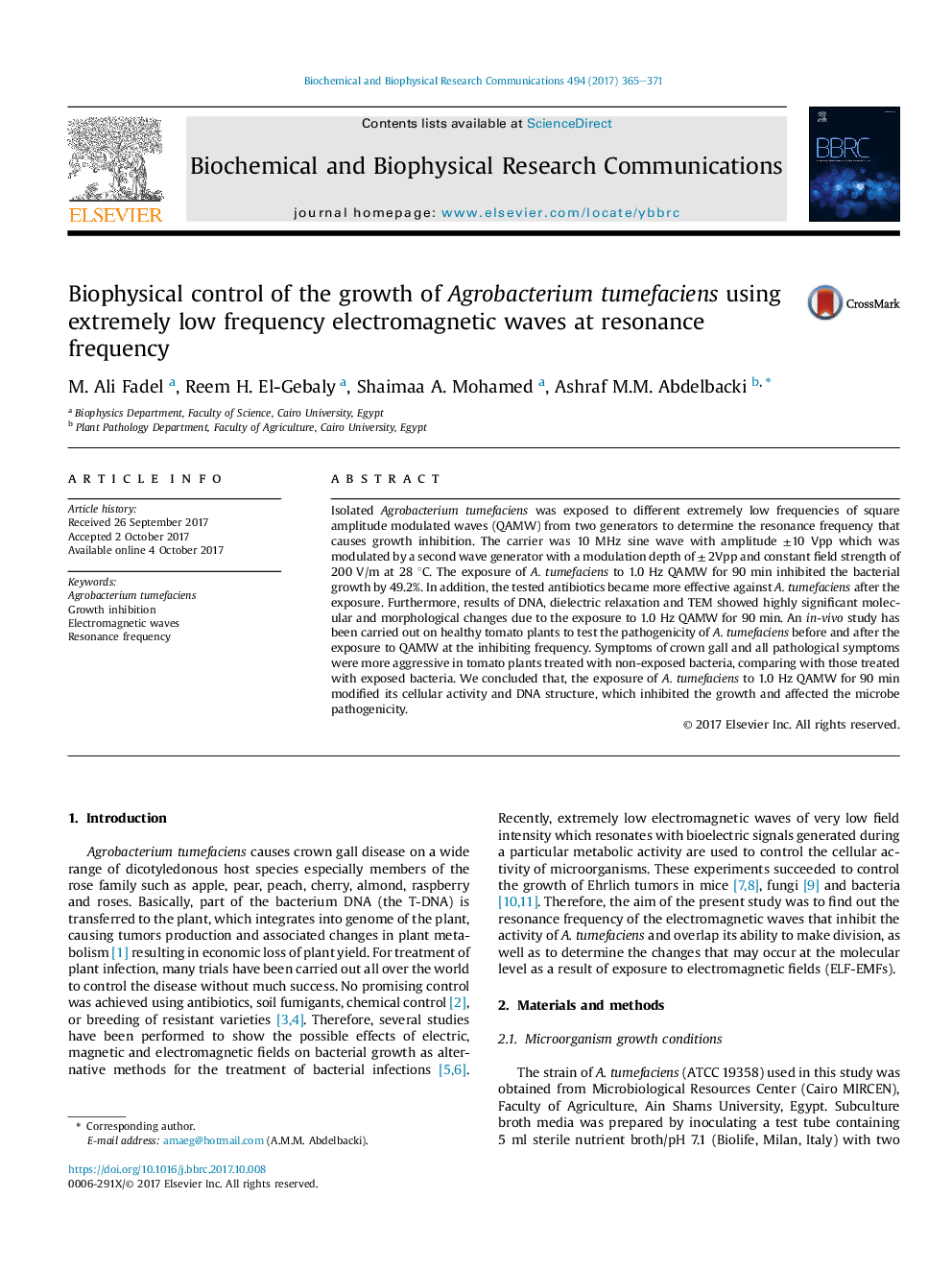| Article ID | Journal | Published Year | Pages | File Type |
|---|---|---|---|---|
| 8296113 | Biochemical and Biophysical Research Communications | 2017 | 7 Pages |
Abstract
Isolated Agrobacterium tumefaciens was exposed to different extremely low frequencies of square amplitude modulated waves (QAMW) from two generators to determine the resonance frequency that causes growth inhibition. The carrier was 10 MHz sine wave with amplitude ±10 Vpp which was modulated by a second wave generator with a modulation depth of ± 2Vpp and constant field strength of 200 V/m at 28 °C. The exposure of A. tumefaciens to 1.0 Hz QAMW for 90 min inhibited the bacterial growth by 49.2%. In addition, the tested antibiotics became more effective against A. tumefaciens after the exposure. Furthermore, results of DNA, dielectric relaxation and TEM showed highly significant molecular and morphological changes due to the exposure to 1.0 Hz QAMW for 90 min. An in-vivo study has been carried out on healthy tomato plants to test the pathogenicity of A. tumefaciens before and after the exposure to QAMW at the inhibiting frequency. Symptoms of crown gall and all pathological symptoms were more aggressive in tomato plants treated with non-exposed bacteria, comparing with those treated with exposed bacteria. We concluded that, the exposure of A. tumefaciens to 1.0 Hz QAMW for 90 min modified its cellular activity and DNA structure, which inhibited the growth and affected the microbe pathogenicity.
Related Topics
Life Sciences
Biochemistry, Genetics and Molecular Biology
Biochemistry
Authors
M. Ali Fadel, Reem H. El-Gebaly, Shaimaa A. Mohamed, Ashraf M.M. Abdelbacki,
